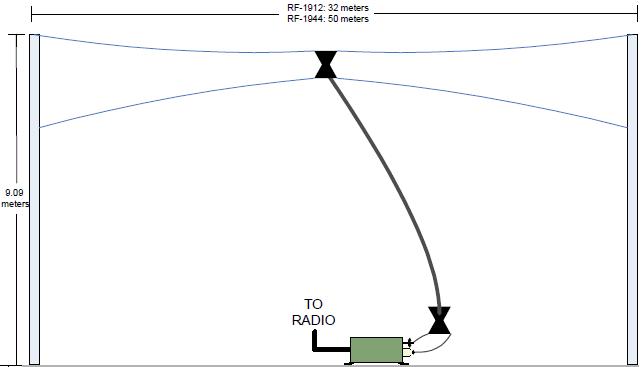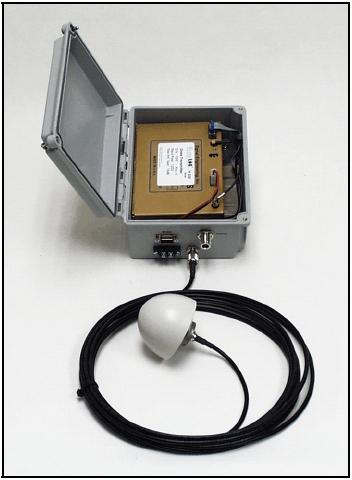This summarizes a selection of applications for the Experimental Radio Service received by the FCC during July 2010. These are related to high-frequency data, military communications, environmental data collection, synthetic aperture radar, WiMAX, sensor networks, interference-resistant communications, LTE, rail transportation, air traffic control, white space networks, and RFID.
- Harris filed an application (with supporting exhibits) for experimental license to operate on various frequencies between 3 and 15 MHz to test an experimental high-frequency wideband waveform that is intended to operate at either 12 kHz bandwidth or 24 kHz bandwidth to allow faster data transfer via high-frequency communications.
- Harris also filed an application (with supporting exhibit) for experimental license to operate on 4.94-4.99 GHz in support of development of US Army’s Warfighter Information Network: Tactical (WIN-T) and Future Combat Systems (FCS) programs. Equipment is to consist of the HNRe2 Highband Network Radio, manufactured by Harris. Harris says the HNRe2 is comprised of four elements: 1) the Baseband Processing Unit, 2) the Highband RF Unit (HRFU), 3) an Inertial Navigation Unit (INU), and a GPS device. The HRFU further consists of an upconverter, a High-Powered Amplifier (HPA), a Switched Beam Antenna (SBA), a Low-Noise Amplifier (LNA), and a downconverter). The test network will consist of five fixed nodes and one mobile node. The FCC has asked Harris to justify extended testing in a band that is primarily allocated for non-government public safety use.
- Canon U.S.A. filed an application (with supporting exhibits) for special temporary authority to operate wireless devices in support of a private technology and product exhibition from September 1, 2010 through September 3, 2010 at the Jacob K. Javits Convention Center in New York, NY. Canon is planning to import many wireless devices from Japan to be used with displays during the exhibition. These devices are not FCC compliant and not expected to be FCC compliant until after the exhibition. Frequencies requested include 315.0-315.7 MHz, 2.40-2.50 GHz, 5.18-5.67 GHz, and 61.6-62.5 GHz. This application was granted on August 11.
- The Washington State Department of Ecology filed an application (and supporting exhibits) for experimental license to operate 150 Design Analysis model H-222 GEOS satellite radios to transmit stream flow data. Operation is to be on 401.710-401.998 MHz.
- BAE Systems filed an application (with supporting exhibit) for special temporary authority to operate an antenna test range in Merrimack, New Hampshire in support of the manufacture of military systems. Many frequencies are requested from 1 MHz to 2587 MHz. The application was granted on July 29.
- Broad Comm filed an application for special temporary authority to operate in support of an “emergency project by the Massachusetts Institute of Technology Center for Ocean Engineering (MIT) related to the Gulf of Mexico oil spill. … Part of the project requires collecting continuous video data from an aircraft that will fly over the Gulf. The video feed needs to be relayed to nearby receiving stations either on land or on vessels near the aircraft. The operation may require the aircraft to fly out over the Gulf to a maximum distance of 300 miles (483 km) from the New Orleans, LA area at altitudes up to 3,000 feet.” The application is inconsistent with regard to the specific frequencies requested. At one point it says three frequencies are being requested: 2,210, 2,220 and 2,230 MHz. At another point it says 2253.3 MHz. The application was granted on August 11.
- Olson Instruments filed an application for special temporary authority to test an IBIS sensor unit during static and dynamic bridge testing. Operation is to be on 17.101-17.299 GHz. This application was granted on August 11.
- Lockheed Martin filed an application (with supporting exhibits) for special temporary authority to operate synthetic aperture radar (SAR) in the portions of the Gulf of Mexico affected by the oil spill. The SAR data collected will be used to classify oil debris in support of FEMA operations. Operation is at 16.9 GHz.
- DRS ICAS filed an application (with supporting exhibits) for special temporary authority to operate in support of the manufacture of military systems. The company has requested confidential treatment of details, but appears to be testing the DRS X46-V SATCOM terminal and 4.8 meter ground station in support of development of X-band mobile satellite communications for Operation Enduring Freedom. Operation is to be on 8326-8332 MHz.
- Reindert A. Smit, apparently an amateur radio operator, filed an application (with supporting exhibits) for special temporary authority to experiment with ROS digital communications modem software, whose purpose is to optimize high-frequency, moon bounce, and meteor-scatter digital communications. Operation is to be on several frequencies between 1.838 MHz and 14.416 MHz. Approval was granted on August 10.
- Northrop Grumman filed an application (with supporting exhibit) for special temporary authority to test a radar system that is to demonstrate the ability to track line-of-sight (LOS) terrain obstructions, target detection, and perimeter intrusion. The radar operates using a slotted waveguide array. Operation is to be on 9380-9440 MHz. This application was granted on July 31.
- Raytheon Missile Systems filed an application (with supporting exhibit) for experimental license to operate in support of development of interference-resistant command and control radio transmissions. Operation is to be on 430-440 MHz and 902-928 MHz.
- Raytheon Network Centric Systems filed an application (with supporting exhibit) to test the Nett-Warrior Communications System. This system will be integrated into other Raytheon systems. Operation is to be on 30.025-74.600 MHz.
- CapRock Government Solutions filed an application (with supporting exhibits) for special temporary authority to test an antenna along with modulation and encryption techniques. Operation is to be on 8280-8300 MHz.
- The Alameda County [California] Sheriff’s Office filed an application (with supporting exhibit) for experimental license to operate on 763-768 MHz and 793-798 MHz to develop and evaluate broadband Long-term Evolution (LTE) equipment.
- Alcatel-Lucent filed an application (with supporting exhibit) for experimental license to test LTE at several cell sites in the Chicago area. The purpose of the testing is to verify LTE performance in a mobile environment and to optimize system settings under various environments. Key performance indicators to be verified include attach success rate, paging success rate, and handover success. Operation is to be on several frequencies between 698 and 793 MHz. This application was approved on August 7.
- The Aerospace Corporation filed an application (with supporting exhibits) for experimental license to test synthetic aperture radar (SAR) on 92.05-99.95 GHz. As the applicant explains, in SAR radars, “the transmitter has a component of motion in a direction perpendicular to the beam, and the reflected signals are formed into an “image” of the scatterers when resolved into groups of scatterers in a two-dimensional map based on time-of-arrival (range coordinate) and Doppler frequency shift (azimuth coordinate).” The applicant notes that, in SAR, weather and vibration can mask man-made effects. Part of the research includes mitigating image degradation due to weather and vibration so man-made effects are more apparent. This application was approved on August 7.
- The Union Pacific Railroad Company filed an application (with supporting exhibits) for experimental license to conduct propagation testing on 220.725-220.750 MHz. The applicant explains that “the US rail industry is subject to a federal mandate to implement Positive Train Control (PTC) technology by the end of 2015. The industry is in the midst of a comprehensive development effort to realize this technology. A central component of PTC is wireless communications. The industry has identified 217-222 MHz as the band of operation for PTC, and some 220-222 spectrum licenses have already been acquired by an industry group. A concerted effort is underway to develop a radio specifically for this application, and we expect to have an authorized radio in early to mid 2011. However, as part of our deployment planning, we need to characterize the performance and propagation of modulated 220 MHz signals by doing field tests this year.”
- The Graduate School of Oceanography, University of Rhode Island, filed an application (with supporting exhibits) for experimental license to operate high-frequency Coastal Ocean Dynamics Applications Radar (CODAR) to map surface ocean currents. Operation was to be on several frequencies between 24.615 and 26.475 MHz. The FCC rejected the application, saying that CODAR is currently being reviewed for its potential as a service requiring a frequency allocation. Until that determination is made, there will be no more experimental authorizations.
- Rockwell Collins filed an application (with supporting exhibits) for experimental license to conduct experiments to test waveforms for high speed data over high-frequencies. Testing is to include characterization of performance and actual wideband channel propagation characteristics. Rockwell Collins says it is a member of the Technical Advisory Committee for MIL-STD-188-110C and MIL-STD-188-141C standards revisions and new standard definitions, and the experimental authorization will enable verification of performance and inter-operability metrics in the standards. Operation is to be on many frequencies between 2.398 and 29.720 MHz.
- Rockwell Collins also filed an application (with supporting exhibits) for experimental license to test a prototype transmitter (as part of a transceiver) for the Automatic Dependent Surveillance-Broadcast (ADS-B) system, a surveillance technique for air traffic control and similar uses. The company intends to conduct mobile ground testing in and around the Rockwell Collins’ facilities in Cedar Rapids, Iowa. Operation is to be on several frequencies between 977 and 1096 MHz.
- SpectrumBridge filed an application (with supporting exhibits) for experimental license to test the usefulness of white space spectrum for use in telemedicine applications – indoor telemetry, medical records exchange, M2M applications, and enhanced wireless broadband access for doctors, patients, and visitors residing within a hospital campus. Testing is to be done in association with Hocking Valley Community Hospital in Logan, Ohio. The requested frequency band is 470-698 MHz.
- Western DataCom filed an application (with supporting exhibits) for special temporary authority to conduct a test of extending cellular telephone coverage on the waters of Lake Erie. Operation is to be on 2353.5-2370.0 MHz. The base station would operate from a tethered aerostat (helium balloon system) at 1000-1400 feet above ground.
- Keurig, Inc. filed an application for special temporary authority to test a coffee brewing system that uses RFID technology to adjust brewing parameters in accordance with the beverage being prepared. Operation is to be on 902-928 MHz. This application was granted on August 7.
- Columbia University filed an application (with supporting exhibits) to operate WiMAX equipment on 2535-2540 MHz in support of the GENI project. The application was approved on August 11.

